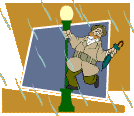
@’s by artist Mike Deodato Jr.!
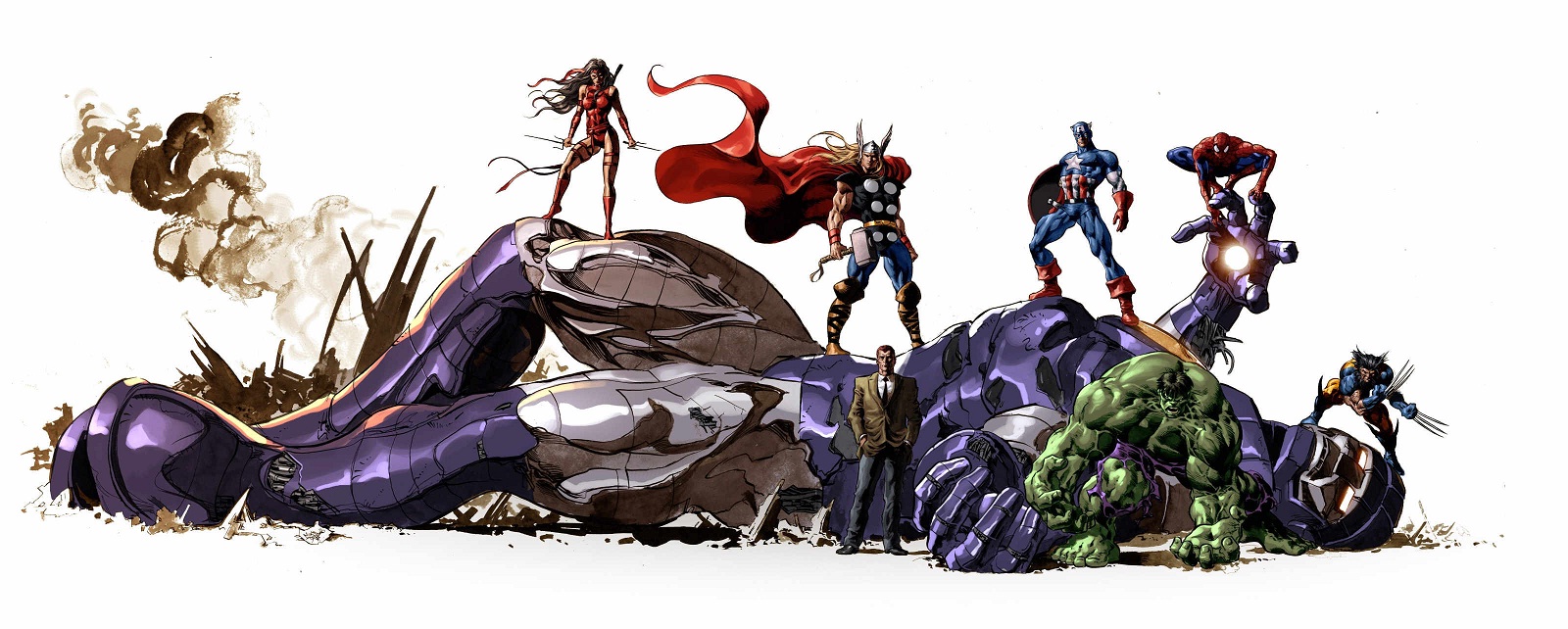 Russ Sheath here. Mike Deodato is one of the premiere and most recognizable artists working in comics today. Hailing from Brazil, Deodato (born Deodato Taumaturgo Borges Filho) grew up watching his journalist father draw and write comic books while teaching the young Mike to draw and introducing him to the world of comics and artists such as Hogarth and Eisner. A passion ignited but it wasn’t until 1993 that Deodato was offered his first American comic book work and worked on projects as diverse as BEAUTY AND THE BEAST, LOST IN SPACE, QUANTUM LEAP and TUROK.
Russ Sheath here. Mike Deodato is one of the premiere and most recognizable artists working in comics today. Hailing from Brazil, Deodato (born Deodato Taumaturgo Borges Filho) grew up watching his journalist father draw and write comic books while teaching the young Mike to draw and introducing him to the world of comics and artists such as Hogarth and Eisner. A passion ignited but it wasn’t until 1993 that Deodato was offered his first American comic book work and worked on projects as diverse as BEAUTY AND THE BEAST, LOST IN SPACE, QUANTUM LEAP and TUROK.DC’s WONDER WOMAN proved Deodato’s break-through work and quickly lead to being snapped up by the competition, Marvel Comics. ELEKTRA, INCREDIBLE HULK and THOR followed along with non-Marvel work including BATMAN, LADY DEATH, STAR WARS and XENA. Recent years have seen Deodato return to Marvel, heading up artistic chores on top titles such as AMAZING SPIDER-MAN, DARK AVENGERS and SECRET AVENGERS, as well as providing a host of attention-grabbing covers across the range of Marvel titles, including SHE-HULK.
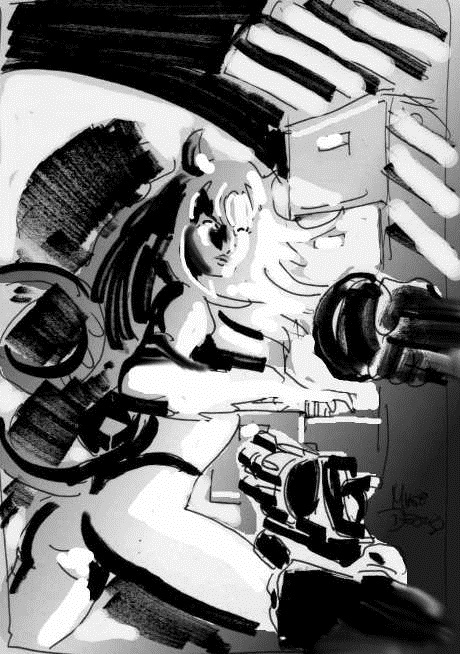 With such a diverse history at the House of Ideas it was only a matter of time before Deodato was honored with a showcase for his talents, the latest in the series of ‘The Marvel Art of’ books. Joining former Marvel Editor in Chief and acclaimed artist Joe Quesada, THE MARVEL ART OF MIKE DEODATO JR. chronicles Deodato’s work from an array of covers, highlights of interior work as well as rare and unseen sketches and promotional work. Marvel we all know can produce a great comic book or two but in recent years the publisher has produced a range of hardcover books that have gathered a sell-out following. The Marvel movies (“Iron Man”, “Iron Man 2”, “Captain America” and “Thor”) have each been accompanied by excellent slip-case editions featuring production art for each of the blockbuster cinematic hits.
With such a diverse history at the House of Ideas it was only a matter of time before Deodato was honored with a showcase for his talents, the latest in the series of ‘The Marvel Art of’ books. Joining former Marvel Editor in Chief and acclaimed artist Joe Quesada, THE MARVEL ART OF MIKE DEODATO JR. chronicles Deodato’s work from an array of covers, highlights of interior work as well as rare and unseen sketches and promotional work. Marvel we all know can produce a great comic book or two but in recent years the publisher has produced a range of hardcover books that have gathered a sell-out following. The Marvel movies (“Iron Man”, “Iron Man 2”, “Captain America” and “Thor”) have each been accompanied by excellent slip-case editions featuring production art for each of the blockbuster cinematic hits.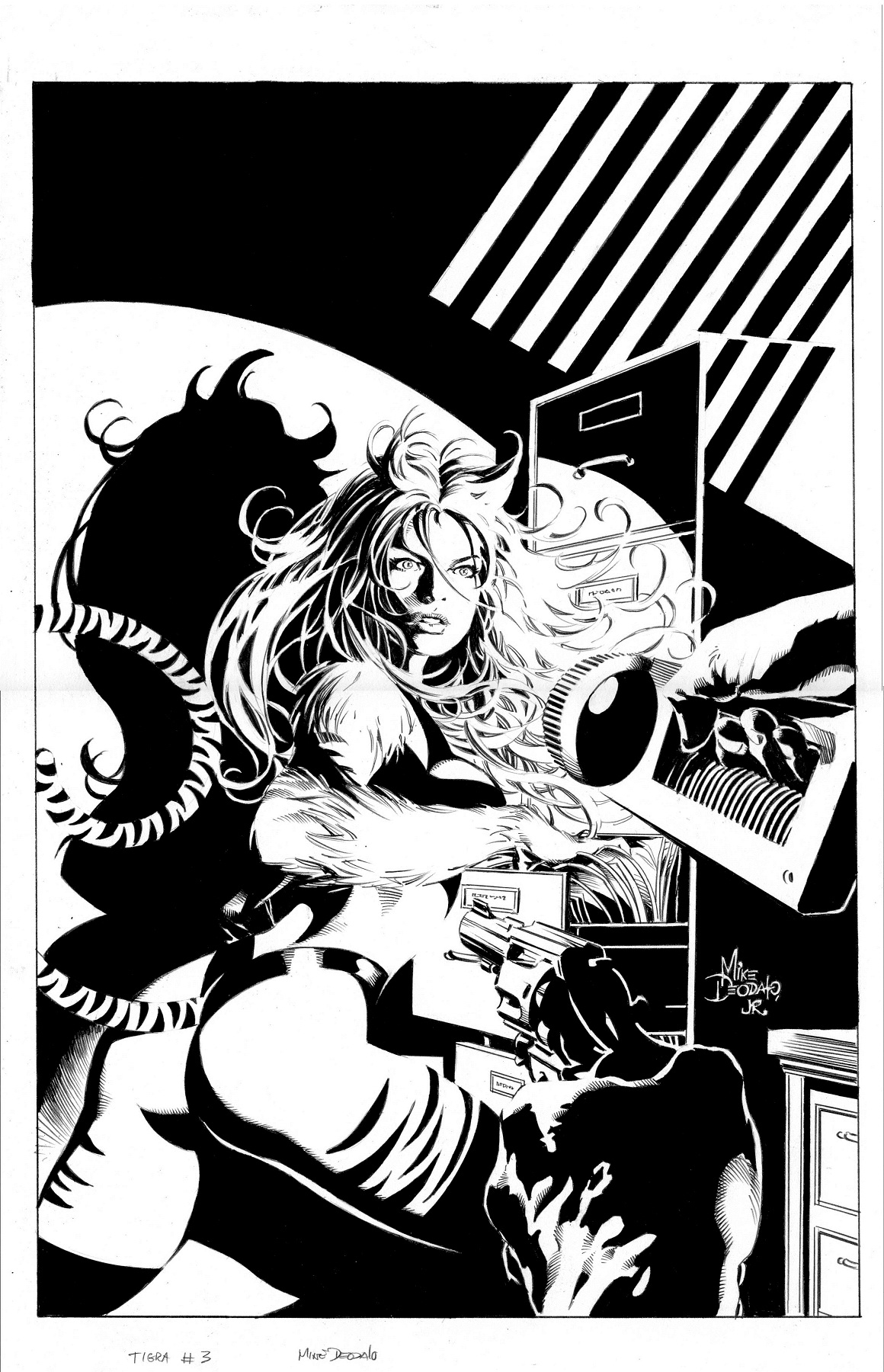 The artists behind the cinematic visions have been joined by artists from the comic book world in a select series of hardcovers highlighting the work of its premiere artists and THE MARVEL ART OF MIKE DEODATO JR. is a must read for anyone interested in studying comic art and what it takes to become a comic book artist. Deodato himself provides commentary, pearls of wisdom and anecdotes from a career spanning nearly 20 years at the House of Ideas and is joined by industry luminaries who provide comment on Deodato’s work and skill as a penciller throughout the book.
The artists behind the cinematic visions have been joined by artists from the comic book world in a select series of hardcovers highlighting the work of its premiere artists and THE MARVEL ART OF MIKE DEODATO JR. is a must read for anyone interested in studying comic art and what it takes to become a comic book artist. Deodato himself provides commentary, pearls of wisdom and anecdotes from a career spanning nearly 20 years at the House of Ideas and is joined by industry luminaries who provide comment on Deodato’s work and skill as a penciller throughout the book.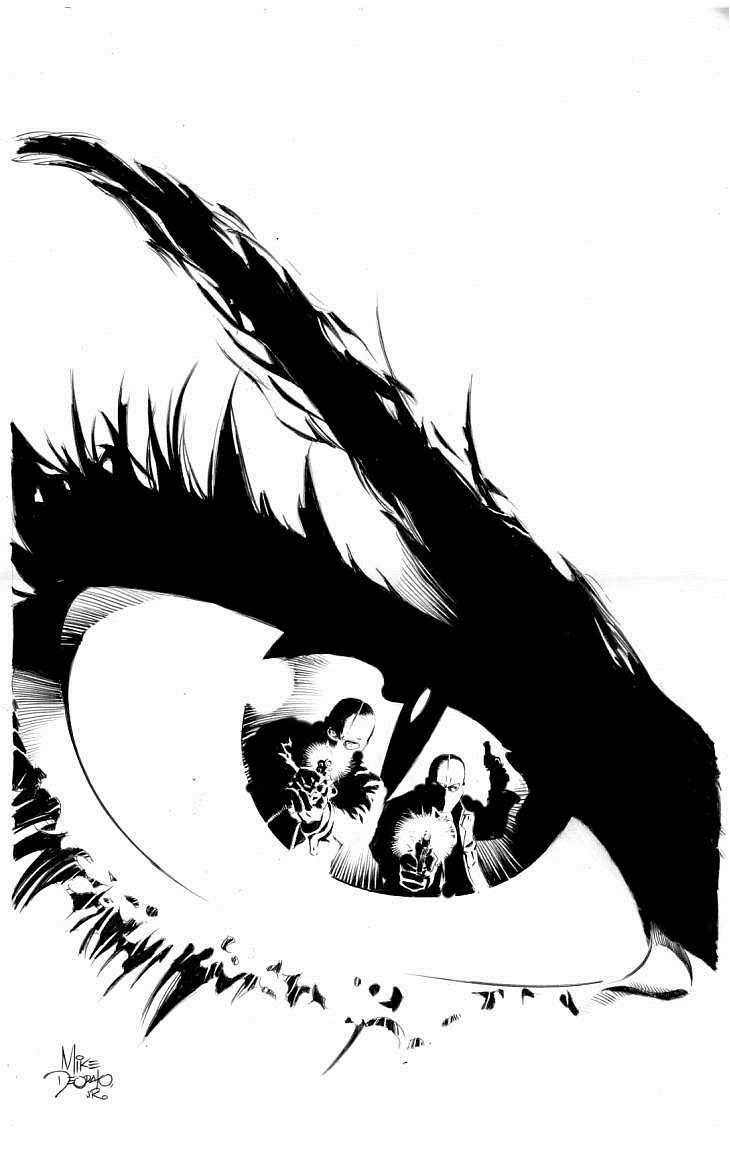 Stan Lee, Bruce Jones, Tom Brevoort and Paul Gulacy are amongst the commentators who avoid the usual gushing and mutual backslapping that is often the case when one collaborator is asked to comment on their peer while most, if not all, get to the point of why they and why the reader should like and learn something from Deodato’s work. Chapters including covers, pencils, interior work and an insightful interview with Deodato follow individual sections spotlighting the titles that helped propel Deodato to the top of his game. THOR, ELEKTRA, HULK, SPIDER-MAN, X-MEN, AVENGERS and THUNDERBOLTS are amongst the titles that feature in their own showcases, each with commentary and rare, unseen work.
Stan Lee, Bruce Jones, Tom Brevoort and Paul Gulacy are amongst the commentators who avoid the usual gushing and mutual backslapping that is often the case when one collaborator is asked to comment on their peer while most, if not all, get to the point of why they and why the reader should like and learn something from Deodato’s work. Chapters including covers, pencils, interior work and an insightful interview with Deodato follow individual sections spotlighting the titles that helped propel Deodato to the top of his game. THOR, ELEKTRA, HULK, SPIDER-MAN, X-MEN, AVENGERS and THUNDERBOLTS are amongst the titles that feature in their own showcases, each with commentary and rare, unseen work.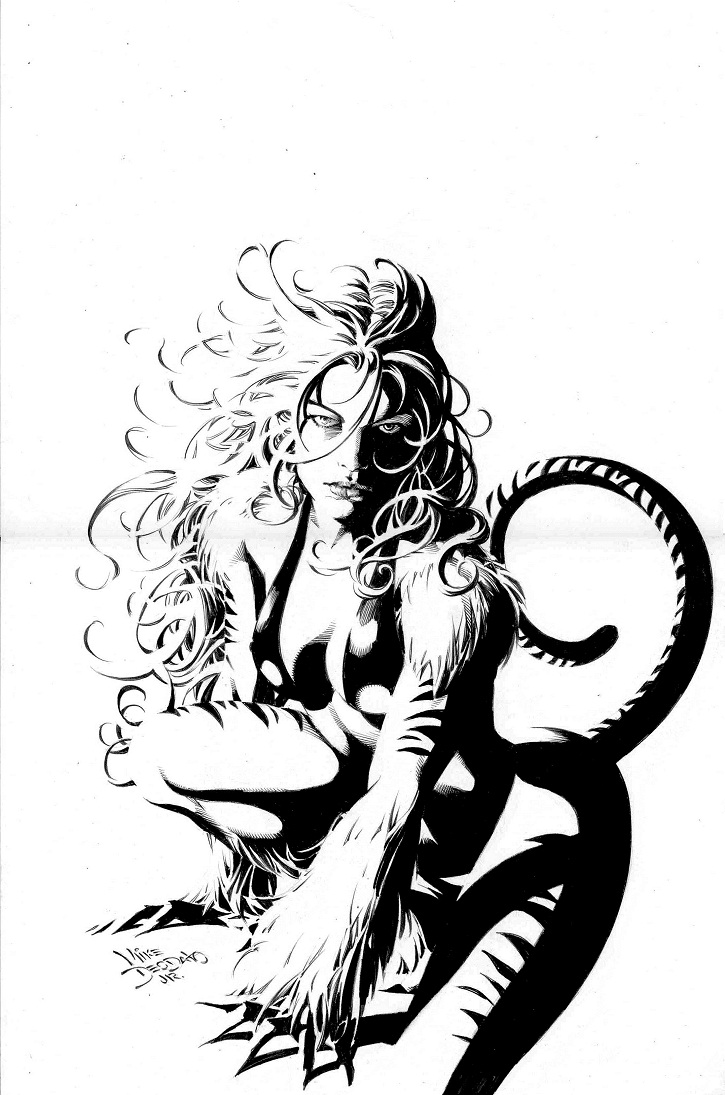 Production-wise, Marvel has put considerable effort into the presentation of the art. All too often art books, particularly those focusing on previously published comic book work, appear thrown together as the publishers pay little mind to how the art is presented. Nothing is more frustrating than a piece of art being lost in the book’s binding or being crammed onto a page and I am glad to say this is not the case here. Marvel has focused on presenting the art at its best and really letting it shine, a fact that other publishers could learn from.
Production-wise, Marvel has put considerable effort into the presentation of the art. All too often art books, particularly those focusing on previously published comic book work, appear thrown together as the publishers pay little mind to how the art is presented. Nothing is more frustrating than a piece of art being lost in the book’s binding or being crammed onto a page and I am glad to say this is not the case here. Marvel has focused on presenting the art at its best and really letting it shine, a fact that other publishers could learn from.Another pitfall of art books is simply reprinting covers and interior art, and again Marvel manages to balance the career highlights with unseen sketches, designs and art from promotional material and action figure packaging that you may not have seen before or in print. Covers, layouts, rough ideas and sketches are all shown as the reader charts Deodato’s process from concept to finished piece. For me the highlight is the showcase of Deodato’s pencils, in particular his trademark use of light and shadow which brings a compelling noire-esque feel to his work. Personally, I’d love to see a pencils and inks only project from Deodato in the not too distant future.
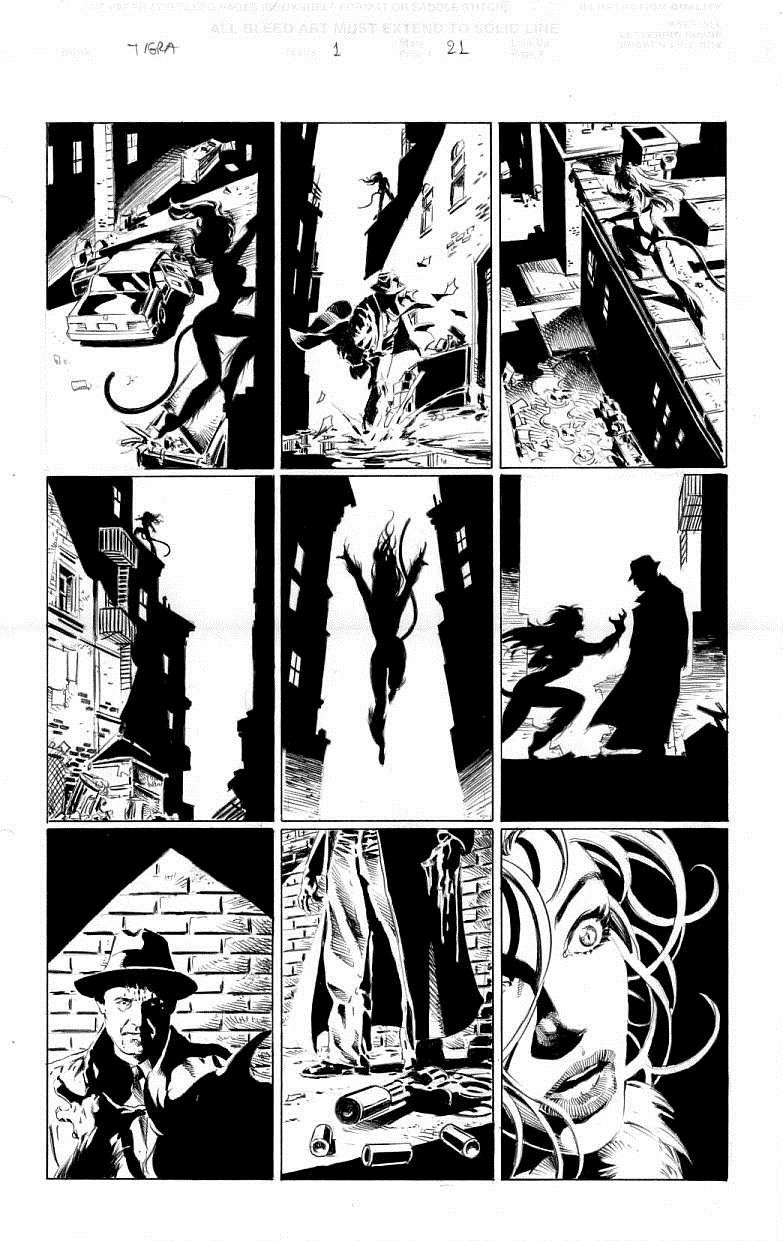 One of the interesting things about any art book covering a legacy as long as Deodato’s is to see the evolution of the artist and with it the evolution of an industry. Elements of Deodato’s early work bear the hallmark of Image Comics and the ‘Image style’ with influences from the likes of Jim Lee, Rob Liefeld and Todd McFarlane particularly evident in Deodato’s work on THOR. Almost every artist in the industry was influenced by the Image upstarts who dared, and Deodato pulls it off better than most and with enough of his own flair and style in a similar way that made Image founder Whilce Portacio stand out from his peers. Deodato’s work on ELEKTRA offers more of the same, but it’s when we discover Deodato’s run on The INCREDIBLE HULK with writer Bruce Jones that we see the foundations of the transition towards the style that we recognize today, which is compelling to see on the printed page.
One of the interesting things about any art book covering a legacy as long as Deodato’s is to see the evolution of the artist and with it the evolution of an industry. Elements of Deodato’s early work bear the hallmark of Image Comics and the ‘Image style’ with influences from the likes of Jim Lee, Rob Liefeld and Todd McFarlane particularly evident in Deodato’s work on THOR. Almost every artist in the industry was influenced by the Image upstarts who dared, and Deodato pulls it off better than most and with enough of his own flair and style in a similar way that made Image founder Whilce Portacio stand out from his peers. Deodato’s work on ELEKTRA offers more of the same, but it’s when we discover Deodato’s run on The INCREDIBLE HULK with writer Bruce Jones that we see the foundations of the transition towards the style that we recognize today, which is compelling to see on the printed page.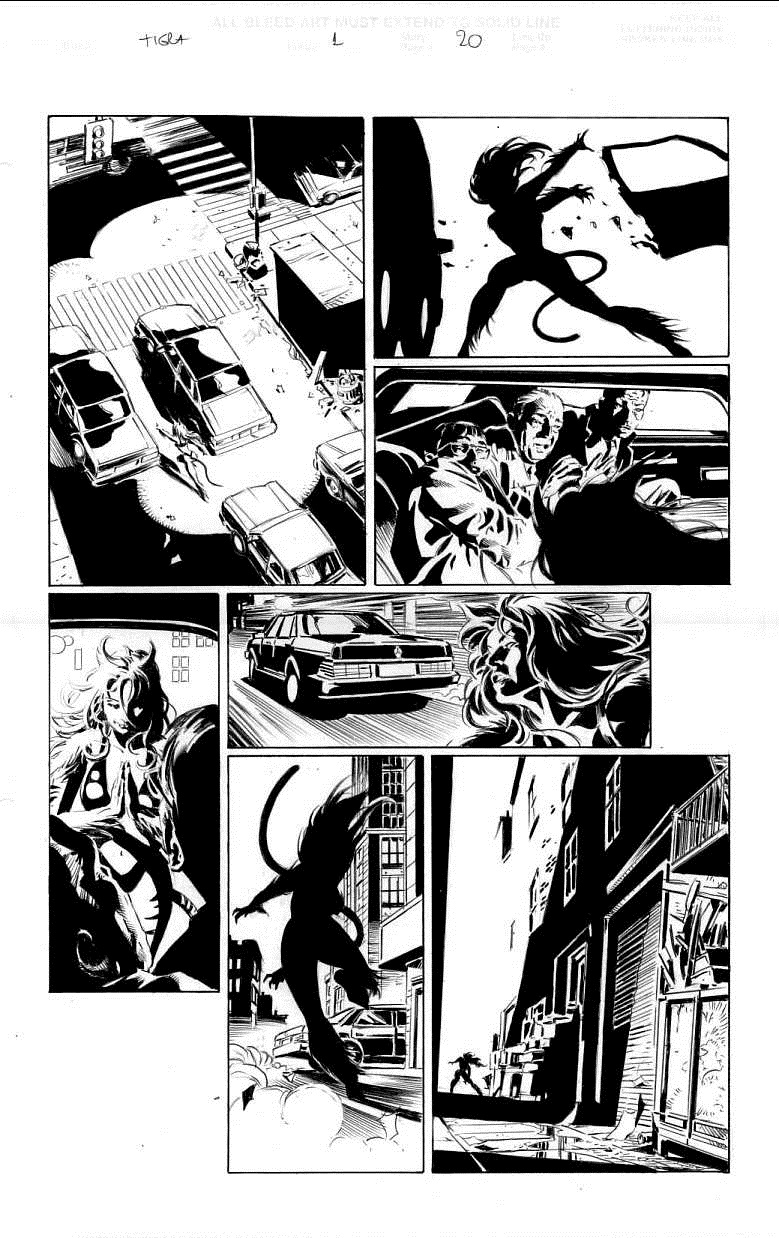 As someone who isn’t an artist but who loves art and comic art in particular this book is a treasure trove of work by an artist who I have long been aware of but who I have only recently begun to follow. Whether a student of graphic storytelling, a Deodato fan, a follower of all things Marvel or simply a fan of excellent art I can’t recommend this book enough. With excellent production value and content that will inform and fan and artist alike, this is everything you could want from a book of this nature.
As someone who isn’t an artist but who loves art and comic art in particular this book is a treasure trove of work by an artist who I have long been aware of but who I have only recently begun to follow. Whether a student of graphic storytelling, a Deodato fan, a follower of all things Marvel or simply a fan of excellent art I can’t recommend this book enough. With excellent production value and content that will inform and fan and artist alike, this is everything you could want from a book of this nature.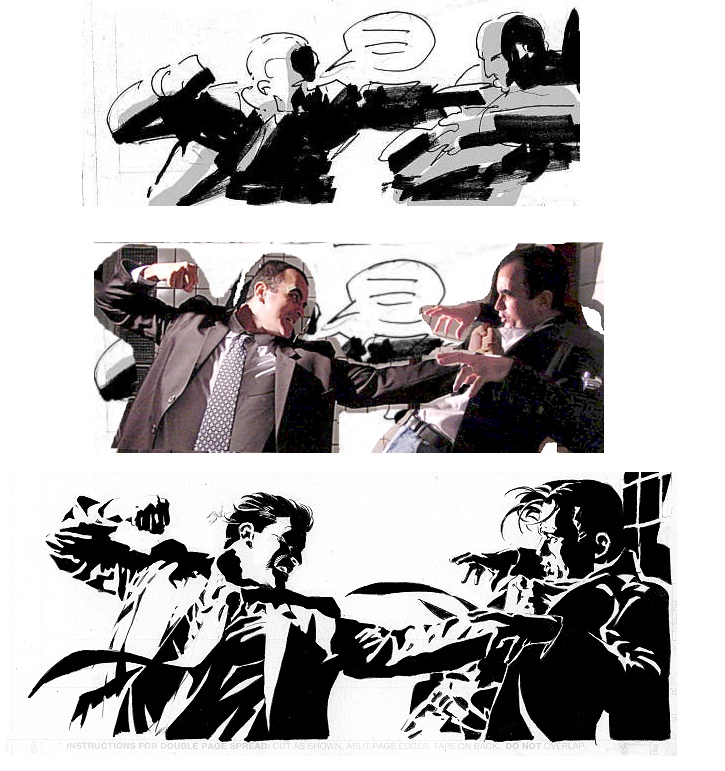 Mike Deodato Jr. took a break from his duties penciling Marvel’s next big hit to talk to me about his career and the book.
Mike Deodato Jr. took a break from his duties penciling Marvel’s next big hit to talk to me about his career and the book.RUSS SHEATH (RS): Mike, when you look back over your time at Marvel, what are the highlights that come to mind?
MIKE DODATO JR (MD): There are so many! The first time they called, with editor Ralph Macchio wanting me on THE AVENGERS. My first big exclusive contract. My books with Bruce Jones. The time they made me draw a story twice, because the editor rejected the best work of my career and wanted something simpler...and another editor published the better version. Working on WOLVERINE. Drawing the X-Men. Discovering Ben Grimm doesn't have teeth the way Kirby drew him. Warren Ellis, Brian Bendis, and other writers lining up wanting to work with ME. It's been great.
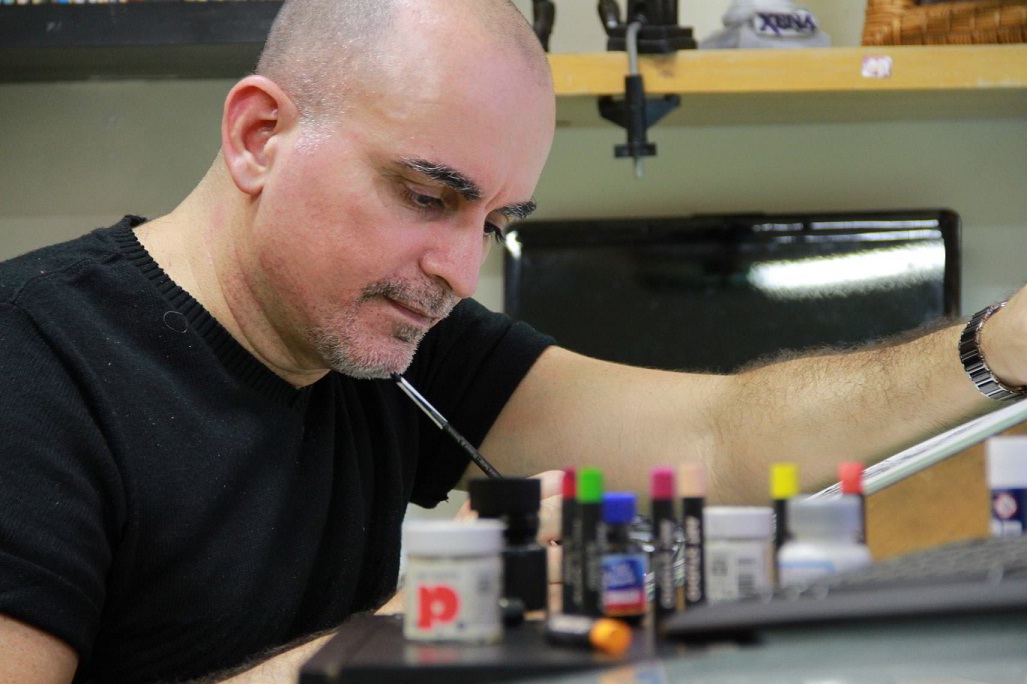 RS: You’ve had the opportunity to tackle many of Marvel’s top characters; any particular characters you’d like to revisit or haven’t had the chance to concentrate on?
RS: You’ve had the opportunity to tackle many of Marvel’s top characters; any particular characters you’d like to revisit or haven’t had the chance to concentrate on?MD: I'd like to do FANTASTIC FOUR sometime and, if they ever get the rights again, I wanna work on CONAN. I really would like to do CONAN.
RS: You’ve worked at Marvel for a number of years, but there seems like a sudden moment where you started to get higher profile work and there was a somewhat meteoric rise to become one of Marvel’s premiere artists. Was there a point that you can specifically attribute to that?
MD: Everything's cyclical. I hit "star status" in the mid-to-late '90s, after WONDER WOMAN at DC, and Marvel soon took me on exclusively. I worked too quickly and kind of burned myself out for awhile there; the work suffered, so I slid back a bit. After I developed my new style, everyone took notice and built me back, slowly. I'm told my work has made books like DARK AVENGERS, NEW AVENGERS, and SECRET AVENGERS into top titles, so it's nice to know my being on a book means something to the readers. By the way, I'm curious...do meteors actually rise? I thought they just fall!
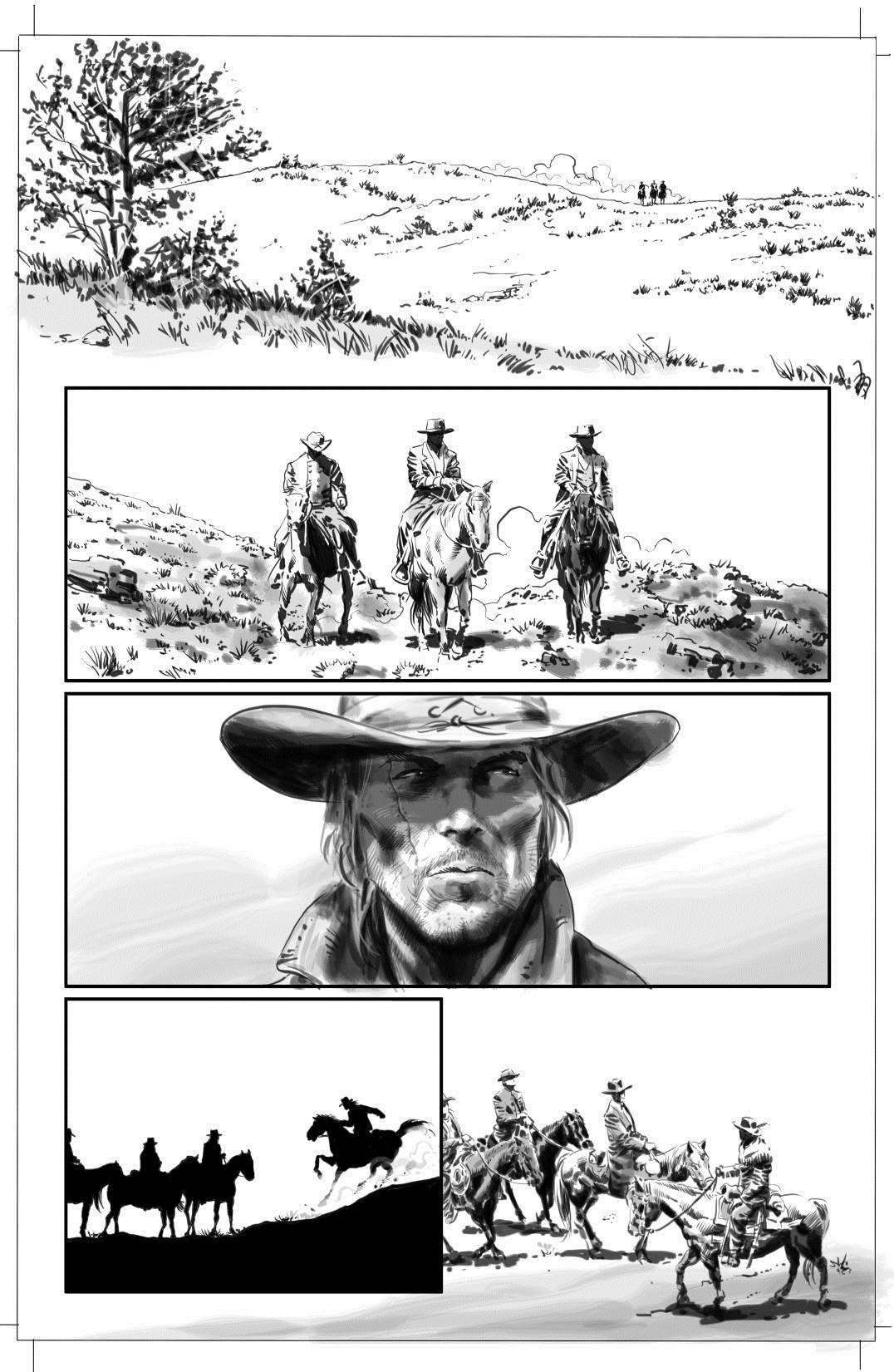 RS: There are few artists at Marvel who have a dedicated art book. What does this compilation mean to you?
RS: There are few artists at Marvel who have a dedicated art book. What does this compilation mean to you?MD: It meant more work! (laughs) I had to squeeze a new cover and some new images into my already-crushing schedule, but I was thrilled, totally happy, to see a hardcover book THE MARVEL ART OF MIKE DEODATO. My agent and friend David Campiti wrote part of it. He knows me all too well and reveals way too much about me, so now he'll have to die. Just kidding. I gave a copy to my father, and that was a good moment -- he was a proud parent, it brought tears to his eyes.
RS: Do you ever get the desire to write a Marvel project for you to draw yourself?
MD: Only partially. I have actually pitched a project to Marvel that I've created and plotted, and I wanted one of my favorite collaborators to script it. I'm told they'll probably move forward with it when the market's doing better.
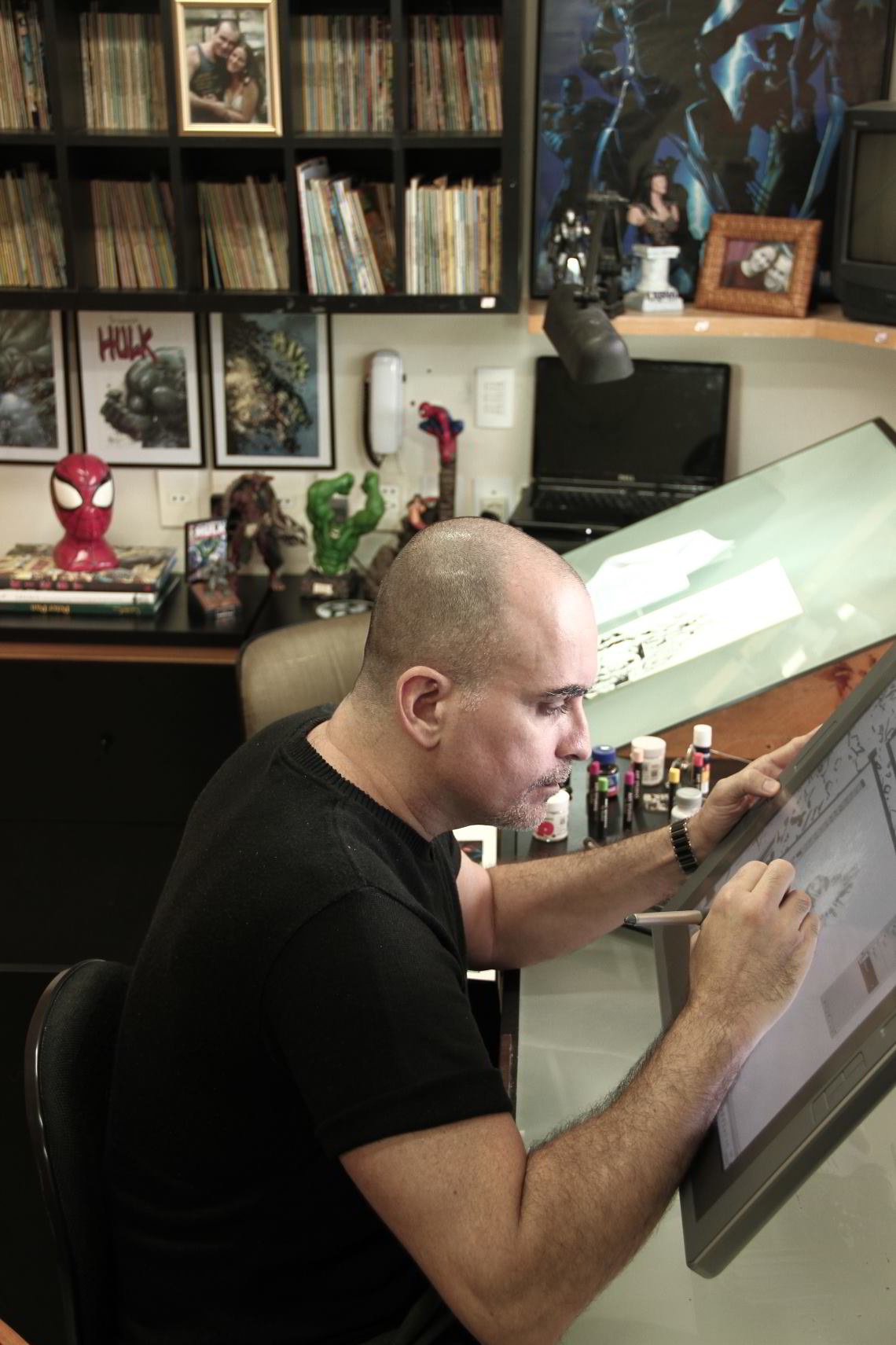 RS: You made the jump from pencils to digital art and you are one of the few artists where none of your individual style isn’t lost in the translation. Can you tell us a little about the move from pencils to digital, why you did it and how it affects your work?
RS: You made the jump from pencils to digital art and you are one of the few artists where none of your individual style isn’t lost in the translation. Can you tell us a little about the move from pencils to digital, why you did it and how it affects your work?MD: It was a long-considered, deliberate choice. I actually lose money drawing interiors on a Wacom 21" Cintiq tablet, because I don't have any original art to sell afterward any longer. The upside for me is, it's much faster. I can actually finish a book in a month. Any extra time I gain, I spend with my family instead of just drawing a bunch more. I'm not greedy. I love my wife and my daughter and want to spend as much time with them as possible.
RS: When you look back over your time at Marvel, what are the highlights? Either in a piece of art that brings a specific memory or achievement, or personally?
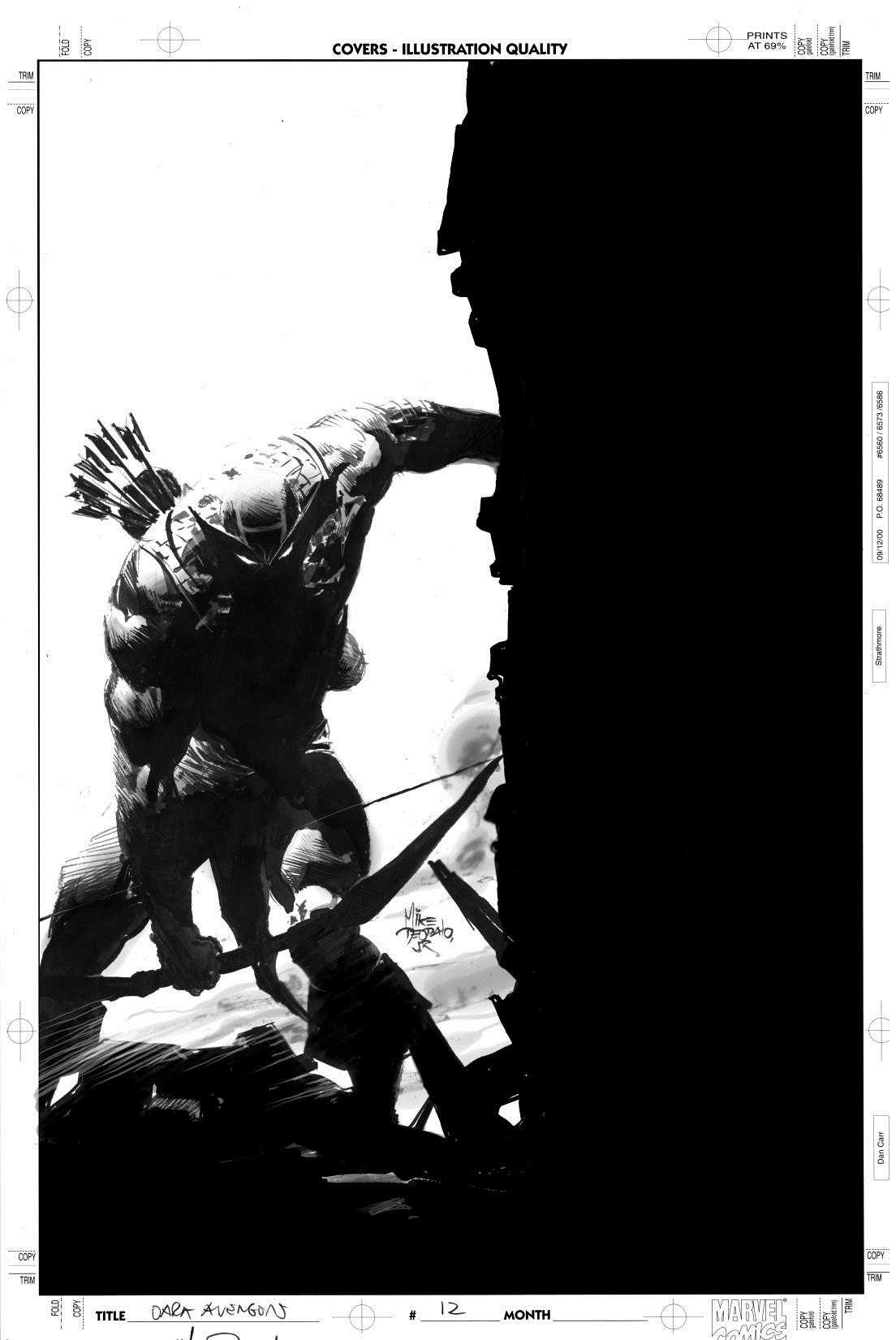 MD: My September 11th Captain America was heartfelt. My issues of WITCHES were a great accomplishment for me -- I was particularly proud of that project, even though Marvel's previous management mucked it up -- I still think the original incarnation of that series would have been amazing. My first Marvel story -- a NIGHTCRAWLER story -- in my new style brings back a lot of memories. My BEST job, of course, might just be the next book I draw.
MD: My September 11th Captain America was heartfelt. My issues of WITCHES were a great accomplishment for me -- I was particularly proud of that project, even though Marvel's previous management mucked it up -- I still think the original incarnation of that series would have been amazing. My first Marvel story -- a NIGHTCRAWLER story -- in my new style brings back a lot of memories. My BEST job, of course, might just be the next book I draw.>
RS: When I think of the first time that I saw your work, it was on WONDER WOMAN, which was very much of the Image style that was popular at the time. Is the style you adopt currently your natural style? Do you have a natural style vs. a commercial style?
MD: What you are seeing IS my natural style, bolstered by decades of experience. If you look back at my work on LOST IN SPACE, QUANTUM LEAP, even BEAUTY AND THE BEAST, you'll recognize me as the same artist as was drawing those Innovation books 20 years ago; but you'll also see I've long since mastered storytelling, body language, facial expression, gestures....all in a way I hadn't back then. My time drawing Image-style comics in the '90s was because that's what the market wanted. Now, the comics world has finally caught up to me to accept me in my own style.
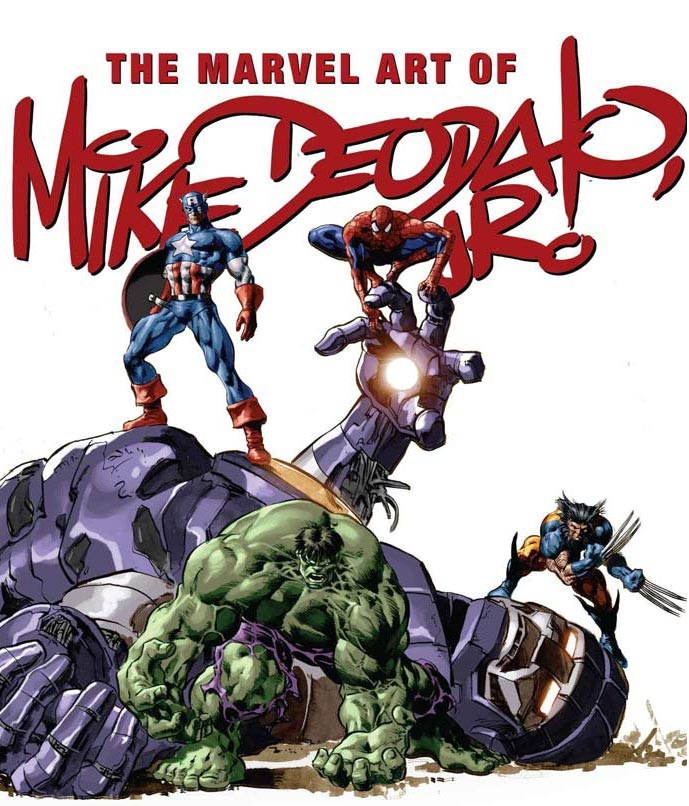 RS: Do you have a single favorite piece that you have produced while at Marvel?
RS: Do you have a single favorite piece that you have produced while at Marvel?MD: Probably one of my painted covers. I don't want to sit still. I want to keep growing, so I keep creating covers -- and doing things with the interior art -- that make me grow as an artist. It's important and it never leaves me bored.
RS: THE MARVEL ART OF MIKE DEODATO JR. is available now! I strongly recommend it!
You can follow Russ Sheath's blog Russwords here and on Twitter here.
Proofs, co-edits & common sense provided by Sleazy G
